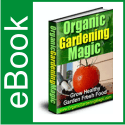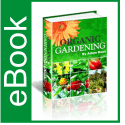GROWING A FLOWER GARDEN
GROWING A FLOWER GARDEN
Article by Jim Dixon
You can have a blooming beautiful flower garden no matter what your level of experience. It helps to understand a few basics about the hows and whys of flowers for them to do their best.
Let there be Sun!All of a plant’s energy comes from the sun and it takes a lot of energy to build a flower. A full sun site where sunlight shines on the area for 6 to 8 hours a day all through the growing season is needed for most flowering plants.
Successful SoilGood soil is essential for a successful flower garden just as it is for a vegetable garden. You soil should not be too sandy, nor too sticky, and with enough organic matter to make it drain well and inviting to the plant roots. Remember vegetables such as summer squash and tomatoes are formed by flowers. Also make sure to test the pH and fertility of your soil using a testing kit.
Annuals and PerennialsThere are two basic kinds of flowering plants as far as gardens go. Annuals that go through their whole life cycle in one season; sprouting from a seed, growing roots and leaves, producing flowers and creating seeds, then dying. They bloom their little flowering heads off with reasonable care which makes them popular with gardeners. Perennials are second kinds of plant and they have roots systems that stay alive underground for several years to even decades. The plant that is above ground may wither and die back in the winter, but it is still alive and will sprout again each spring. But there is a trade off in having perennials and their long life. This is that they only bloom for a few weeks or months each year and exactly how and when varies with species.
Which are Better?Both, as they each have their uses in the garden. For places where you want a lot of flowers, annuals are great but they generally require more watering, fertilizing and other care than perennials and planting each year is a chore. To give your garden a steady structure and form, Perennials are the gardener’s favorite. Gardener’s also delight in the anticipation of waiting for their favorite flower’s bloom time. There are few truly plant-it-and-forget-it plants, but perennials do tend to need less care than annuals.
Long or Short Term?For an effort that will pay off for years to come, perennials (whether you buy then as seeds of plants) will take a year or more to become established and bloom in your garden. If you want flowers now, annuals are the way to go. But you can go either way; many gardeners use both types of flowering plant in their gardens.
Do you want this of that?If you want to change the look of your garden each year, this can be accomplished by planting annuals, but even a gardening with a foundation of perennial plants can get new interest by using a different annual accent each year. For the best color in pots and in northern climates use annuals. You plant them in the spring and by the time the first frost comes in the fall they are done. This is a lot easier then having to protect the roots through a frozen winter,. Perennials may live in pots for year in climates where the winter cold is not an issue. If the plants have compatible needs you can combine flowering annuals with perennials or other foliage plants.
About the Author
Jim has been writing articles online for nearly 4 years now. Not only does this author specialize in gardening, cooking, health issues, and weight loss, you can also check out his latest website on http://www.bestbabywalker.net which reviews and lists Best Baby Walker.
Use and distribution of this article is subject to our Publisher Guidelines
whereby the original author’s information and copyright must be included.

 August 22, 2012
August 22, 2012 







